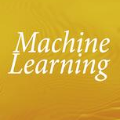Various blockchain systems and schemes have been proposed since Bitcoin was first introduced by Nakamoto Satoshi as a distributed ledger. However, blockchains usually face criticisms, particularly on environmental concerns as their ``proof-of-work'' based mining process usually consumes a considerable amount of energy which hardly makes any useful contributions to the real world. Therefore, the concept of ``proof-of-useful-work'' (PoUW) is proposed to connect blockchain with practical application domain problems so the computation power consumed in the mining process can be spent on useful activities, such as solving optimization problems or training machine learning models. This paper introduces HDCoin, a blockchain-based framework for an emerging machine learning scheme: the brain-inspired hyperdimensional computing (HDC). We formulate the model development of HDC as a problem that can be used in blockchain mining. Specifically, we define the PoUW under the HDC scenario and develop the entire mining process of HDCoin. During mining, miners are competing to obtain the highest test accuracy on a given dataset. The winner also has its model recorded in the blockchain and are available for the public as a trustworthy HDC model. In addition, we also quantitatively examine the performance of mining under different HDC configurations to illustrate the adaptive mining difficulty.
翻译:自中本·萨托希首次将Bitkamoto Satoshi首次采用Bitcoin作为分布式分类账以来,提出了各种供应链系统和计划,但是,这些供应链通常会面临批评,特别是环境方面的批评,因为其基于“防工”的采矿过程通常消耗大量能源,对真实世界没有多大用处,因此,“防工”的概念是把“防工”概念与实际应用领域问题联系起来的,这样采矿过程中的计算能力就可以用于有用的活动,例如解决优化问题或培训机器学习模式。本文介绍了HDCoin,这是新兴机器学习计划的一个基于供应链的框架:由大脑驱动的超尺寸计算(HDC)。我们把HDC模型发展成一个在阻工采矿中可以使用的问题。具体地说,我们界定了HDC情景下的POUW,并发展了HDC的整个采矿过程。在采矿过程中,采矿过程中消耗的计算能力被用于竞争,以获得某个特定数据集的最高测试精确度。赢家还介绍了HDC的模型,该模型记录为新兴机器学习计划的基础:由大脑驱动的高度计算模型,并用不同的采矿结构展示。




